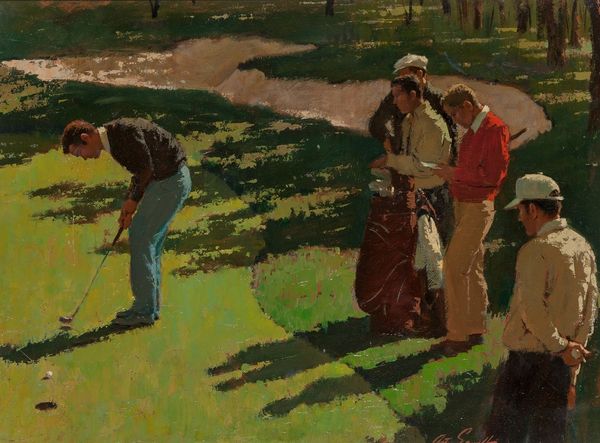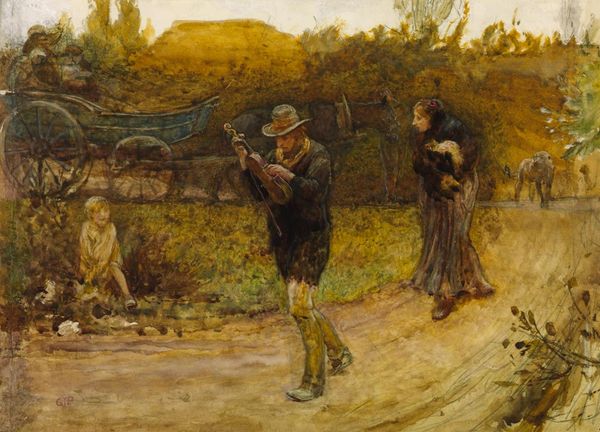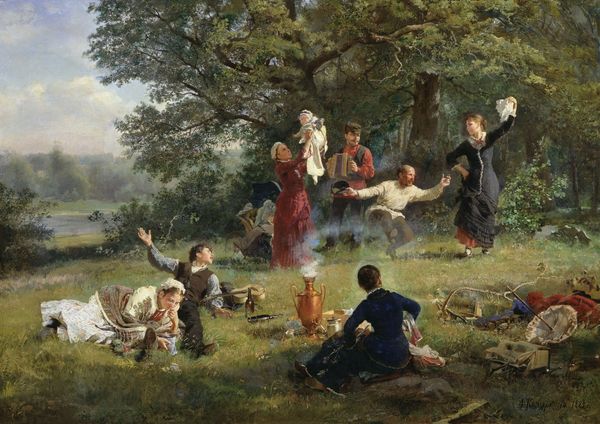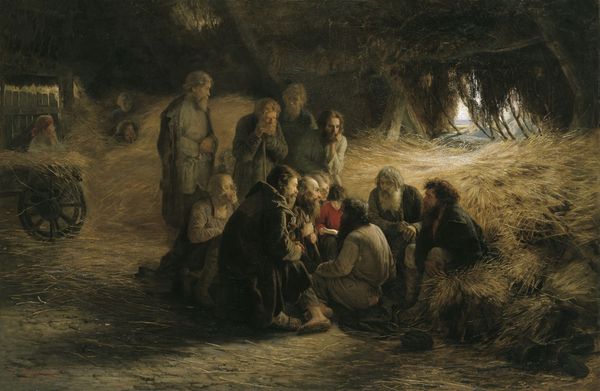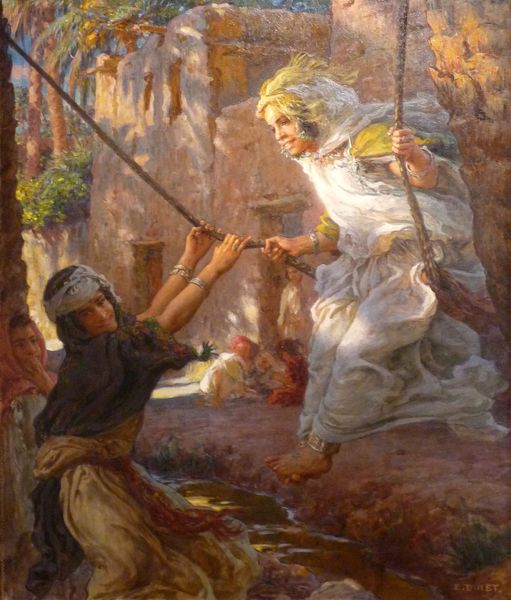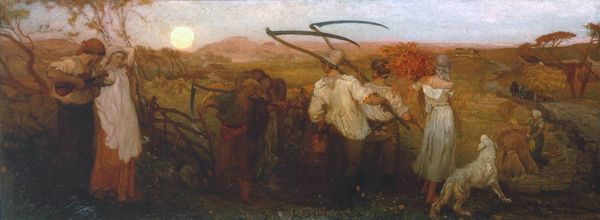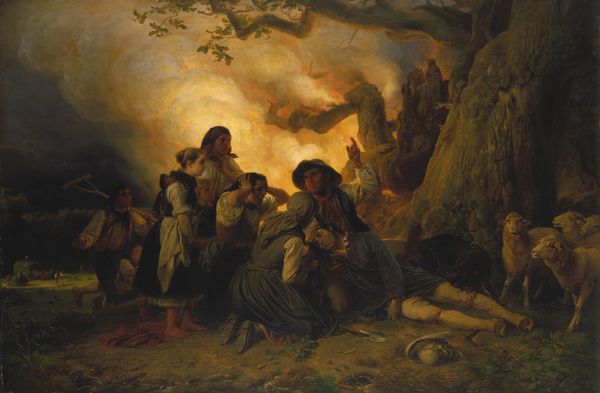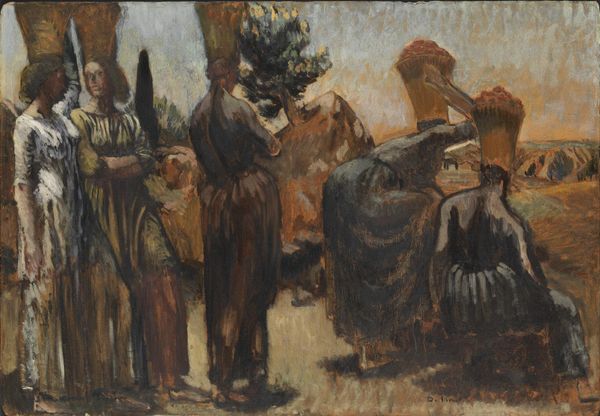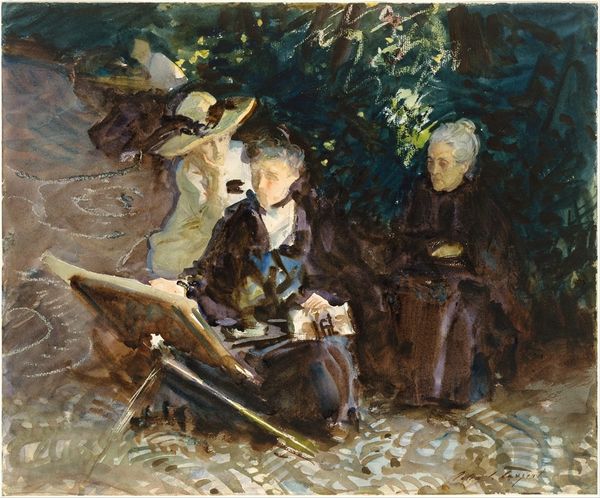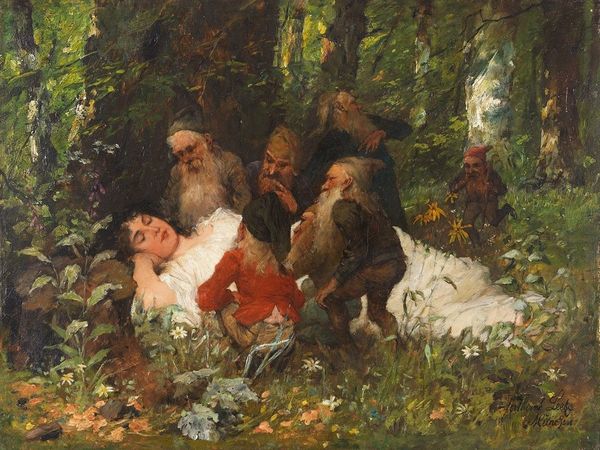
Copyright: Public Domain: Artvee
Editor: Here we have Peder Severin Krøyer's "Wine Harvest In The Tyrol," painted in 1901 using oil paints. The scene is lively and depicts people hard at work. What strikes me is the impasto technique – you can almost feel the texture of the paint mimicking the grapes themselves. What stands out to you in this piece? Curator: Considering this work from a materialist perspective, the ‘Wine Harvest’ is ripe with interpretations regarding labor and production. The visible brushstrokes and thick application of paint aren’t just aesthetic choices; they’re evidence of Krøyer's labor, aren’t they? And, they draw attention to the physical act of painting itself. Look at the repetitive motions suggested in the depiction of the figures picking grapes, mimicking the repetitive action of applying paint to canvas. Does this artistic choice highlight or perhaps romanticize the labor of agricultural workers, in your view? Editor: That's a really interesting point; I hadn’t considered the connection between Krøyer's labour as an artist and that of the workers he’s portraying. It does make you wonder about his intentions – was he trying to elevate their work or perhaps comment on the social structures of the time? Curator: Exactly! And we also have to consider the context. Impressionism, while seemingly focused on light and color, emerged during a period of rapid industrialization. Could Krøyer be presenting a kind of pre-industrial, romanticized ideal of labor, especially when contrasted with the increasing mechanization of the era? Editor: That makes sense. Seeing the painting as a commentary on labor shifts my perception entirely. Thanks for sharing this materialist viewpoint; I’ll definitely look at art through this lens from now on! Curator: My pleasure. Examining the physical creation and social environment fundamentally changes how we engage with art, wouldn’t you agree?
Comments
No comments
Be the first to comment and join the conversation on the ultimate creative platform.
